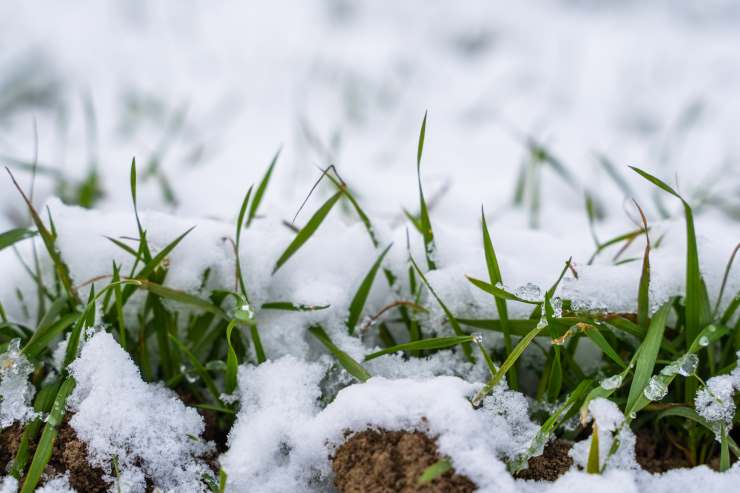Is It Possible to Grow Tropical Palm Trees in New York?
Do you like tropical palm trees but live in New York? Tropical palm trees are aesthetic and beautiful, so that they can add value to your landscape. However, most tropical trees cannot grow in New York. The high winds and long winters in New York City can prevent these trees from growing the whole year, so it could be really hard for you to grow them.
When you hear the term “tropical,” it instantly reminds you of warm, tropical climates. However, there are tropical tree types that can withstand really cold temperatures. Some climates still might be too cold for tropical palm trees. But still, there is no reason to lose hope as some types can grow in New York.
Why Can’t You Grow Some Types of Tropical Palm Trees in New York?
As you know, there are many requirements when growing a Tropical Palm Tree. And some of these requirements can be hard to meet in New York. Tropical palm trees require mild and tropical climates so that they can thrive.
Most cold and durable trees like the Needle and Windmill can survive harsher temperatures around 10 degrees F, and sometimes they can endure brief exposures to colder temperatures. This might sound like New York is suitable for palm trees. However, you still must remember that these tropical trees can survive only brief exposures to these conditions.
South Carolina and Florida rarely have brief cold snaps. Still, for New York, during the whole winter, there may have several cold snaps, and prolonged cold temperatures could stay below 20 degrees F for long periods. Therefore, temperatures above 55°F are required for the average palm tree. However, this amount varies significantly amongst these species.
What are the Soil Condition Requirements When Growing a Palm Tree in New York?
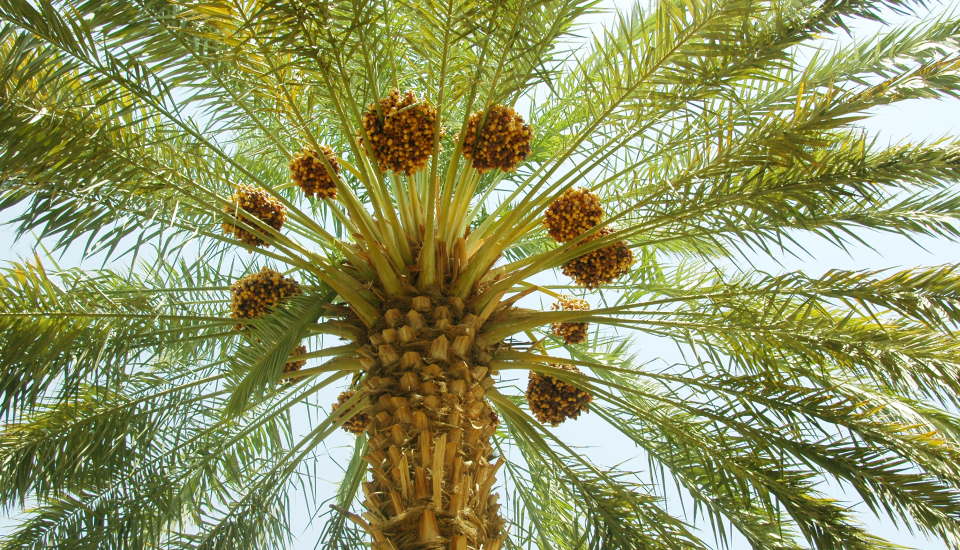
When growing any plant, including tropical palms, the acidity, moisture, temperature, and soil-type are critical. These trees require moist, humus-rich, well-drained soil, but with compost and organic matter, they may flourish in most garden soils. Most species thrive in soil with a pH of 6 to 7.
Healthy tropical palm tree growth requires light and well-drained soils. Because most of these tropical trees dislike compacted soils with few air pockets, such as clay, sand-based soils, such as sandy loam, provide the optimum earth environment for spreading tropical palm roots. Heavy soils suffocate roots, resulting in stunted development and root disease. Water-retaining soil additions, such as peat moss or humus, placed into sandy soil provide the roots’ optimum water and nutrient concentrations. However, soil amendments should not account for more than 20% of the total volume of the soil.
What Type of Soil Should You Use When Planting a Palm Tree in New York?

New York’s most common soil is called “Honeoye,” unofficially the state’s official soil. This fertile soil is slightly acidic to neutral in pH, has a high moisture content, and is slightly acidic to neutral in pH. Some of these tropical trees can be supported by Honeoye, and you can supplement your tree with magnesium. These are mostly used for indoor palm trees and contain a time-release system for consistent nutrient supply.
What are the Water Preferences of Palm Trees?
The water requirements of a newly planted tropical palm tree differ greatly from those of an established one. Water new palms twice a week until the soil in the first 18 inches is moist. A moisture meter is an excellent tool for determining the depth you have saturated. After six months, the palm’s root structure has improved, allowing it to locate appropriate moisture. Watering is only required twice a month at this point. Drought tolerance is high in a well-established palm.
What Are the Wind Conditions That Can Affect Palm Trees?
Wind can have a significant impact on tropical tree survival. They catch the wind more frequently than streamlined leaves because they have large fan-like or long slender leaves.
A portion of New York is located directly on the Atlantic Ocean’s coast. As a result, tropical storms have a chance of hitting the coast and moving inward. Because New York City and Long Island are the two most popular places to grow these trees, this is a significant consideration when determining whether or not they will thrive in New York.
What types of tropical palm trees can grow in New York?
As we have stated before, New York could be too cold for some types of tropical palm trees. But we should remember the fact that none of them survive in New York. On the other hand, some sturdy types can survive in New York. So, let’s look into them and see which is best for you.
How Will the City Life in New York Would Affect Palm Trees?
We all love seeing tropical trees lining the streets on vacation. However, we also know that these tropical trees are not happy as they would be in their natural habitat. Car pollution, cigarette butts, and littered plastic bottles are all examples of anthropogenic consequences of city living, and they can affect the health of a palm tree.
In addition, water levels, PH, and nutrient levels are factors that might alter soil conditions. In a study, they tried to identify how people and city life affected the growth of palm trees. As you might expect, more individuals interfered with them. Over 8 million people, anthropogenic pollution significantly impacts New York City’s plant life.
Another disadvantage of city living is the water stress on the soil. Spillways and waterways try to steer water in the direction it would naturally flow., the less likely they were able to grow from their seeds. Some soils grow too wet to support tropical vegetation like palms, while others become too dry.
Now we know about the disadvantages of city living on these trees. So now, let’s see which type of palm trees can grow in New York.
1- Windmill Palm Tree
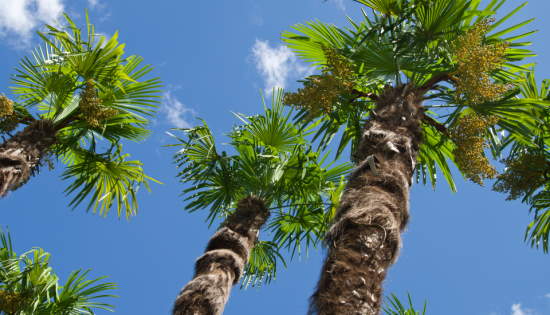
The first one in the list, Windmill palm trees, are native to Japan, China, Myanmar, and India. They are known by several names, including trachycarpus fortune (its scientific name), Chinese Windmill, Chusan, and Windmill. It belongs to the Arecaceae family and is a strong, evergreen tree.
The Windmill is one of the hardiest tropical palm trees, enabling you to bring a touch of the tropics to your temperate environment. It is among the few tropical trees that can withstand temperatures below freezing (down to 10 Fahrenheit). This slow-to-moderate-growing evergreen can be grown on the West Coast as the Pacific Northwest and as far east as New York state.
Windmill tropical palms are distinguished from other types by their ability to withstand cold temperatures. That’s not all, though. They require minimal maintenance and are also resistant to pollution and pests. In addition to these amazing qualities, The Windmill has a stunning appearance. It usually has large, fan-like leaves arranged in a symmetrical pattern. This produces lovely foliage on the top of the trunk, which can easily reach a width of 2-4 meters.
This is a slow-growing type of tropical tree. As a result, if you want to grow this tropical tree, you’ll need to be patient. If you want a windmill palm tree in your home, make sure you have adequate room for it to grow.
2- Needle Palm Tree
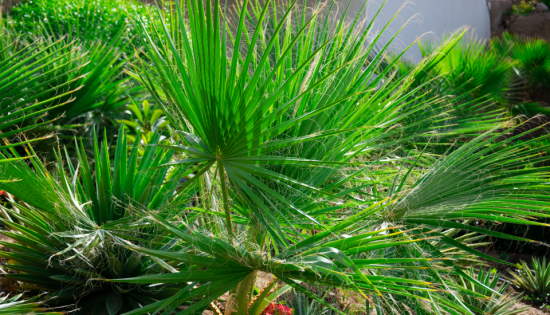
Rhapidophyllum hystrix, or needle palm, is an herbaceous perennial native to the southeastern United States. This plant, native to this warmer location, is quite a cold-hardy; it is praised for giving gardens and yards a more tropical appearance. It produces many stems with sharp needles that give the plant its name and develops into a huge cluster that can reach 6 feet (2 meters) in diameter and height.
This tree bears red drupes, and tiny flowers that might be white, yellow, or brownish-purple, and its leaves are glossy and green. It grows naturally on shady, wooded hillsides or beside streams. It’s popular among gardeners to grow it under trees, particularly live oaks.
How To Grow Needle Palm Tree?
It’s quite simple to grow Needle palms. However, the needle palm is a versatile tree that gardeners of all abilities can cultivate. Because, it is cold, hardy, versatile to varied circumstances, drought-tolerant, and comfortable in shade or full sun. One of the most crucial factors to consider is finding a location in your yard or garden where the Needle Palm will have enough room to develop and spread. It takes a long time to grow, but once it does, it will take up at least six by 6 feet of space (2 by two m.).
The needle palm tree’s care is hands-off once it’s in the ground. It will need to be watered regularly until it is established. Still, after that, it will be able to adapt to drought conditions or a lot of rain. Because these trees are slow-growing, you could use fertilizer twice a year to speed up their growth, though it isn’t necessary. Apply fertilizers suitable for tropical trees with added magnesium in the spring and late summer.
3- European Fan Palm Tree
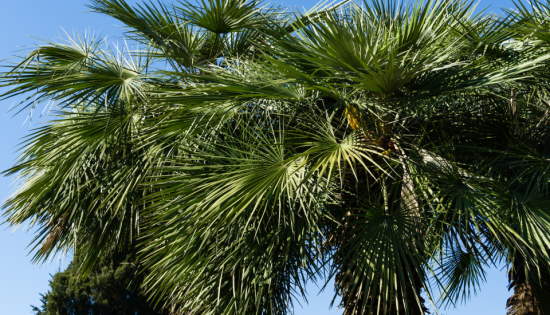
The European Fan is a clumping, slow-growing tree that develops to be 8 to 15 feet tall and 6 to 10 feet broad. This is Europe’s only native tropical palm and is hardier than most tropical trees.
This tree stands out in the environment thanks to its fine-textured fronds. The hue of the leaves varies from nice light green to magnificent silver. The fronds are maintained in place by small, curving trunks. Little clusters of yellow blooms appear in the spring, followed by inconspicuous fruits. Whether young or mature, this tropical tree creates a wonderful sculptural addition to a garden or patio pot.
How to Plant and Care for European Palm Trees?
This is quite a hardy tropical plant that can endure harsh conditions once established. European fan palms can withstand temperatures as low as -10°F; the leaves may get damaged, but the stem survives and re-leaves. Once established, these plants are extremely drought tolerant as an added plus. They do not, however, tolerate salt. Another advantage of the European fan palm is that it appears immune to the devastating yellowing disease that affects many of these species.
In both partial sun and partial shade, the European Fan thrives. However, it grows slower in the shade; the fronds will be slightly larger than when grown in the sun. Also, remember that each frond’s stems have sharp teeth, so you may want to plant them somewhere where pets and people won’t come into contact with them.
4- Pindo Palm Tree
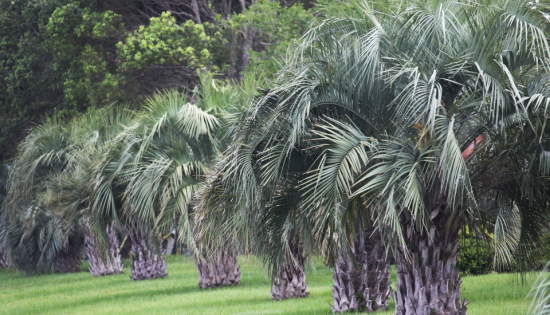
The Pindo is a resilient plant that thrives in various soil types and circumstances. It will withstand light shade or full sun but does not appreciate being completely shaded. It can withstand drought but likes damp, well-draining soil. A good watering weekly should suffice to maintain its health during the growing season.
The Pindo is extremely resilient and can withstand winter temperatures as low as 5°F (-15°C) if properly cared for throughout the spring and summer. However, the best temperature for it is between 65°F and 85°F (16°C and 30°C). Tropical Pindo thrives when fertilizer is used in the spring and summer. However, it can still lead to magnesium and potassium deficits, so keep an eye on the soil condition in the weeks following treatment.
Where to Grow Pindo Palm?
This tropical plant can be cultivated in full sun or light shade with a south, east, or west-facing orientation. A slightly shady situation should be selected for longer fronds, stimulating your plant to reach for the sun. Tropical Pindo placed in the full sun tends to be more compact. It will survive frosts, but it can be moved indoors to overwinter if you keep it in a container.
It is also worth mentioning that, while this tropical plant will flourish in pots, it won’t grow to the same heights or widths as plants planted in the ground. This plant is drought-tolerant and grows well in a variety of soil types. However, it likes sandy, well-draining soil.
How to Water Pindo Palm?
The Pindo is a drought-tolerant tropical tree, although it thrives in moist, well-draining soil. Therefore, it will be beneficial for the plant if you deep soak it thoroughly once a week during the spring and summer months. However, caution is essential when watering, as too much can be just as harmful as too little. Before adding more water, the soil should be allowed to dry to a depth of roughly 2 inches after a thorough soaking.
Your watering schedule will be affected by the amount of rain that falls and its location. In a shady environment, the soil around the plant may dry more slowly than in full light. Before watering, use a water meter or your finger to check the moisture level in the soil.
What Temperature Conditions Does Pindo Palm Needs?
The Pindo is amongst the hardiest palms, surviving freezing temperatures as 5°F (-15°C) during the winter. However, its ability to withstand freezing temperatures and frost will be influenced by how well it is cared for during the spring and summer.
Give it plenty of attention during the growing season, and it should be able to withstand the harsh winter cold without harm. If you’re worried about your Pindo surviving the winter, you can use an anti-desiccant in the late fall. When this dries, it will form a flexible waterproof layer around the plant, preventing water loss.
Tie the leaves with heavy-duty twine and cover with styrofoam after the anti-desiccant has dried. The hessian is secured with heavy-duty tape. Next, wrap the hessian around the trunk of your Pindo and secure it with much the same type of heavy-duty tape. A layer of bubble wrap can be placed on top of the styrofoam around the trunk for more protection.
Attaching bubble wrap over the styrofoam covering the fronds will prevent air from reaching them, causing decay or encouraging the growth of fungus. You could also use mulch or straw to better shield the roots of your Pindo from freezing conditions.
5- Saw Palmetto Palm Tree
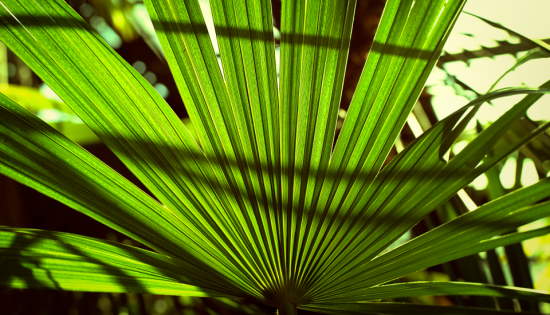
This tropical tree is a slow-growing shrub with stems that grow below or parallel to the ground, forming a dense ground cover. Rhizomes form as stems bury throughout time. Rhizomes are underground plant stems that develop new shoots and roots that reach deep into the soil.
Rhizome-sprouted stems can grow to be up to 10 feet long. In addition, it can grow an erect or arching trunk coated in old leaf bases on rare occasions.
Each clump contains approximately 20-25 enormous palmate, fan-shaped leaves supported by 2ft long petioles. The spines on stems are extremely sharp. This shrub can grow up to 10 feet in diameter, but it usually stays between 4 and 5 feet.
The leaves are evergreen, rigid, and about 3 feet broad, with 18-20 leaflets and a waxy film covering them. While the ordinary Serenoa repens has left, there are additional silvery-green leafed Serenoa repens variations.
How to Care for Saw Palmetto Palm Tree
Once established, which takes a long time, this low-maintenance plant is very easy to care for. It grows nicely in full sun with acidic or alkaline soil drains well.
Saw palmetto’s high salt tolerance makes it ideal for growing near the seashore or close to pavement or driveway that may be salted during the winter. It can withstand little shade and is drought tolerant but does not thrive in severe shade or damp conditions.
It can survive without care, but it regularly looks much better with fertilizer and irrigation. If you want to plant tropical saw palmetto in your yard, it would be best to buy it from a nursery rather than transplant it from the wild since it does not transplant well.
Rabbits and deer like to bite off the leaves near young plants’ bases so they may require some protection. Trimming dried leaves once a year can keep them appearing tidy.
How to Water Saw Palmetto Tree?
Serenoa repens is drought-hardy but prefers light watering regularly. While it can withstand rainy conditions, it will not look as well. However, for the first few years, ensure enough water and good drainage.
For the first week, water a newly planted palm every day, then every other day for the second week, before returning to its regular watering regimen. You can reduce the watering once the plant has established itself, which takes approximately three years.
Mulch the soil with a 1 to 2-inch layer to keep it moist. To minimize rotting, keep the mulch at least 6 inches away from the base of the palm.
How to Fertilize Saw Palmetto Tree?
If you discover it needs extra nutrients, fertilize it with a slow-release, high-quality tropical palm fertilizer twice a year. Most of the time, this plant can obtain all of the nutrients it requires from the soil.
If you’re growing it in a container and indoors, you’ll need to consider the fertilizing plan. Indoors, you could use a palm fertilizer that constantly supplies nutrients to the roots.
Conclusion
Now that you know which tropical palm trees you can grow in New York, you can easily grow and care for them. Although growing a tropical plant in New York is tricky, it is not impossible. With the right type of tropical tree and enough care and maintenance, you can grow this tree in New York with some effort. So, if you want to have a tropical vibe in your garden and a tropical landscape, you can have the perfect palm tree you have wished for in New York with some research and some effort.

